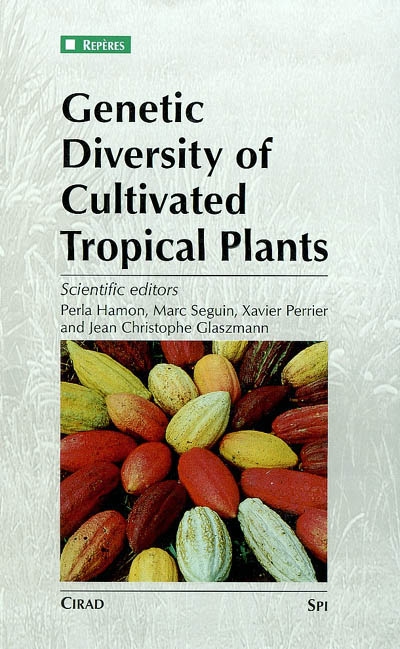en savoir plus

Permet à tous ses détenteurs d'obtenir 5% de réduction sur tous les livres lors du retrait en magasin (réduction non cumulable avec les réductions de type étudiant).
Offre également un certain nombre d'avantages auprès de nos partenaires.
Avec les favoris, retrouvez dans un espace les sélections effectuées au fur et à mesure de vos navigations dans le site.
Constituez pour votre usage personnel vos listes de livres en prévisions d'achats futurs et votre sélection d'articles, dossiers, événements, vidéos ou podcasts préférés ou à découvrir plus tard...
Il suffit simplement de cliquer sur "Ajout Favori" sur chaque page qui vous intéresse pour les retrouver ensuite dans votre espace personnel.
Requiert un compte Mollat
Requiert un compte Mollat
- Sciences humaines - Histoire
- Géographie
- Géographie - Démographie - Territoire
- Agriculture et monde paysan
Genetic diversity of cultivated tropical plants
en savoir plus
Résumé
Conservation, évaluation et utilisation des ressources génétiques rassemblées en une collection à travers le monde, et particulièrement une méthodologie pour constituer une core collection. Utilisation de marqueurs moléculaires et biochimiques pour évaluer le déterminisme génétique de caractère agronomique. ©Electre 2025
Quatrième de couverture
About the Book
It was in the 1960s that the scientific community first became aware of the threat that disruption of natural environments posed to the germplasm of numerous cultivated species. It began working to collect that germplasm, and a multitude of collections were set up worldwide. These collections are now so large that they are proving difficult to maintain and characterize, and their management has become a crucial issue. Germplasm conservation, evaluation, and use all need to be rethought.
In response to those concerns, Frankel and Brown introduced the idea of core collections in the 1980s : a sample of accessions from a larger collection is taken to provide as accurate a picture as possible of the existing range of diversity. However, what criteria and tools should be used to put together the sample ?
Agronomic criteria are primordial for breeders but are sometimes difficult to evaluate, and their genetic determinism is often complex. Molecular genetic markers, which are of no direct use, reveal the structure of the existing diversity, which can be used as the basis for setting up a core collection. Little is known about the relationships between these two levels of variability : Are the different types of molecular markers equivalent ? Does a strong molecular structure systematically mean a strong structure based on agronomic criteria as well ? Do the two types of structure necessarily tally ?
Statistical tools, which can be used to analyse the resemblances between individuals or populations, are essential in identifying the structure of diversity, if indeed it is structured. But which method is most appropriate for each type of marker ? How reliable is the picture it gives of diversity and what biological significance can it be assumed to have ?
This work goes some way towards answering those questions on the basis of a study of the genetic diversity of eleven tropical plants. Three methodological chapters-on biochemical and molecular markers, data analysis, and setting up core collections-complement the study.
Fiche Technique
Paru le : 15/09/2003
Thématique : Agriculture et monde paysan
Auteur(s) : Non précisé.
Éditeur(s) :
CIRAD
Science Publishers, Inc.
Collection(s) : Repères
Contributeur(s) : Editeur scientifique (ou intellectuel) : Perla Hamon - Editeur scientifique (ou intellectuel) : - Editeur scientifique (ou intellectuel) : - Editeur scientifique (ou intellectuel) :
Série(s) : Non précisé.
ISBN : Non précisé.
EAN13 : 9782876145412
Reliure : Relié
Pages : XVI-359
Hauteur: 25.0 cm / Largeur 16.0 cm
Épaisseur: 2.2 cm
Poids: 701 g

